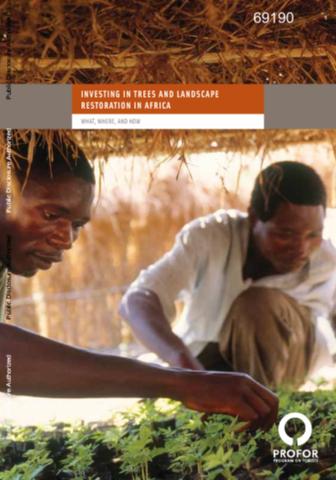Resource information
Reforestation measures for degraded lands, strategies for the sustainable management of forest resources, and agroforestry practices that incorporate trees into farming systems are increasingly demonstrating their promise for producing commercialized tree products. Although the level of investment so far has remained modest, the challenge is to find ways to scale up promising investments in a way that will have a clear impact at the landscape level. These types of investments can help achieve the triple wins of climate-smart agriculture: increased incomes and yields, climate change adaptation and greenhouse gas mitigation.Market trends are promising for a wide range of tree-based technologies, including tropical fruits, cashews, honey, timber and wood products, lipids, gums and resins, tree crops, and agroforestry systems. In many cases, African entrepreneurs, farmers, civil society, and governments have responded dynamically to the widespread challenge of land degradation. The continent is dotted with landscapes where production of trees on farms and in managed forests has grown dramatically to meet market and subsistence needs; sustainable agricultural practices and revegetation have restored soils and watersheds; and key conservation areas are being protected. However, this is not happening at the scale required by societal needs in Africa. In part, this is due to a lack of strategic cooperation and coordination between private sector investors and land managers (who are focused on realizing profitable opportunities and meeting their own needs) and public and civil society actors (who are focused on restoring forest cover and ecosystem services). Such coordination is only possible when the biophysical potential for landscape restoration, private sector investment opportunity and incentives, and societal demand for multiple benefits converge. Much can be learned from examples of large-scale landscape restoration in Ethiopia, Kenya, Niger, Tanzania, and Zambia, and the variable roles of the private sector, farmers, government, and civil society in supporting and undertaking investment.


